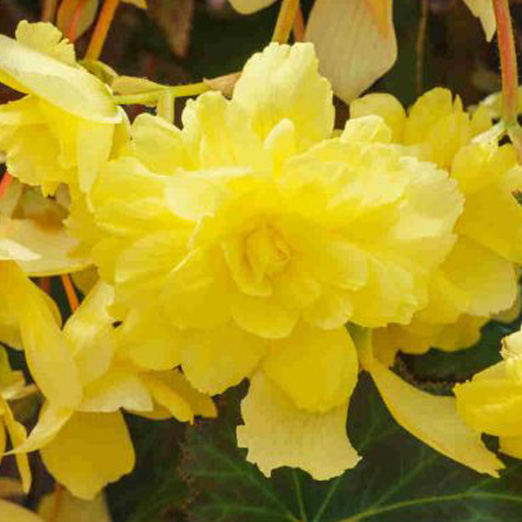How to grow Edgeworthia
Of the three species in this small genus, just one – Edgeworthia chrysantha – is available for cultivation. Hailing from forests and shrubby slopes in China, this open, rounded, deciduous shrub is valued for its winter interest, its scented, rounded flowerheads appearing on bare stems from January to April. The flowers can be yellow, orange, or red, and have downy, silvery undersides.
The foliage is narrowly oval and dark green, and papery bark gives this species its common name of paper bush.
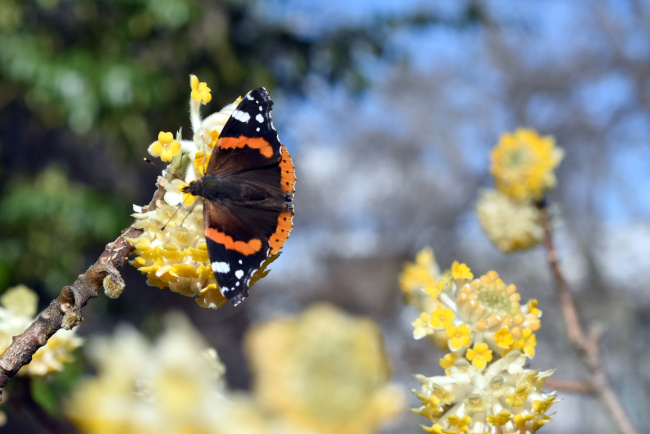
Soil pH
Position
Hardiness

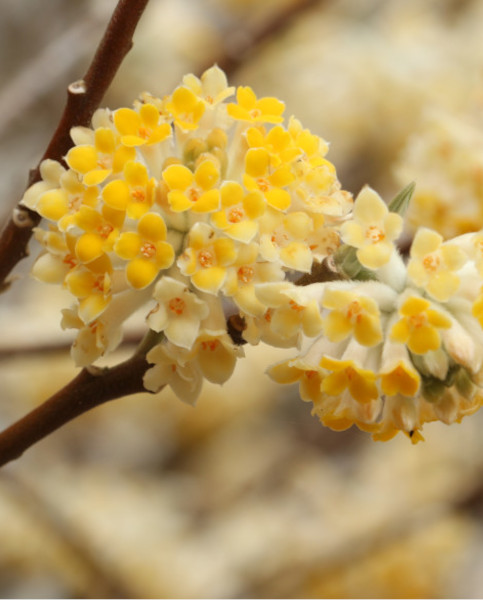
Where to plant Edgeworthia
Position- Full sun or light dappled shade
Soil- Moist, well-drained, humus-rich, and loamy
Flowering Period- Late winter to early spring
Hardiness- Hardy
For best results, plant in autumn or spring. An autumn planting is suitable for those gardening in mild conditions (broadly speaking, the southern half of the UK). For those liable to very cold winters it is best to wait until spring (generally the northern half of the UK). Planting can also be carried out during summer, though a watchful approach to watering is required.
In milder parts of the country, edgeworthia can be grown in a sheltered border. In frost prone areas, either give it the protection of a warm, south-facing wall or grow in a container so that it can be overwintered under cover (a cool conservatory or greenhouse is ideal). This is less to do with the overall hardiness of the plant (classed as H4, meaning it can withstand the average UK winter), and more about the flowers which can be damaged by frost.
How to plant Edgeworthia
In the ground
- Clear the chosen area of weeds.
- Dig a planting hole several times larger than the root ball. If you are gardening on poor soil, it is a good idea to mix in plenty of well-rotted organic matter at this stage. Avoid soil prone to winter waterlogging.
- Place the plant in the hole, ensuring the top of the root ball sits level with the surface of the soil. Too low and the plant may rot, too high and the roots can dry out.
- Backfill with soil and firm in gently.
- Soak well with water.
- Mulch around the base with well-rotted organic matter.
In a container
- Choose an appropriate container (the bigger the better), ensuring there are plenty of drainage holes.
- Use a good quality potting compost with plenty of horticultural grit mixed in, and, if not already present in the compost (check the description on the bag) some slow-release fertiliser granules.
- Start by partially filling the pot with compost; enough so that when placed on it the upper surface of the root ball is about 3cm lower than the top of the pot.
- Infill all the space surrounding the root ball with compost, firming down with your fingers then adding a little more so the plant is held tight.
- Pick up the pot (if you can!) and lightly tap on the potting bench or ground a few times to help further settle the compost around the plant.
- Soak well with water.
- A mulch with horticultural grit will look attractive and help to prevent a ‘cap’ or crust forming on the top of the compost (something container plants can suffer due to the artificial nature of their watering).

What to plant with Edgeworthia
There is something magical about winter blossom on bare, naked stems; perhaps it is to do with the stark backdrop giving greater prominence to the flowers. For an extra special, gloom-busting display, try dedicating a whole section of your garden to trees and shrubs which flower in this way. Think wintersweet, Viburnum x bodnantense, witch hazel, magnolia, and winter-flowering jasmine. A smattering of snowdrops at ground level will complete the winter wonderland.
If you would like any further planting ideas or growing advice for your edgeworthia, please contact our friendly and knowledgeable Customer Care Team - we will be more than happy to help you.
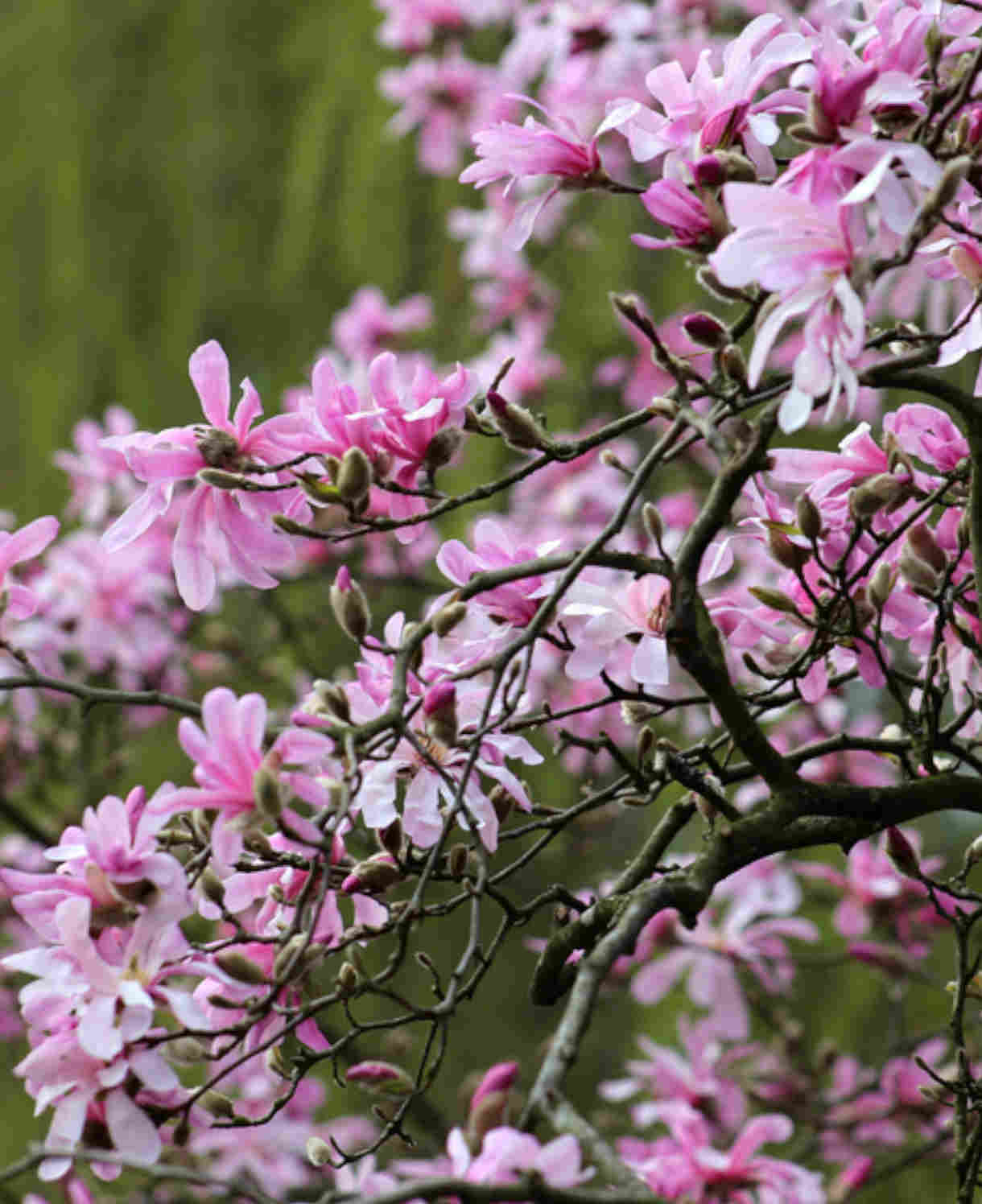
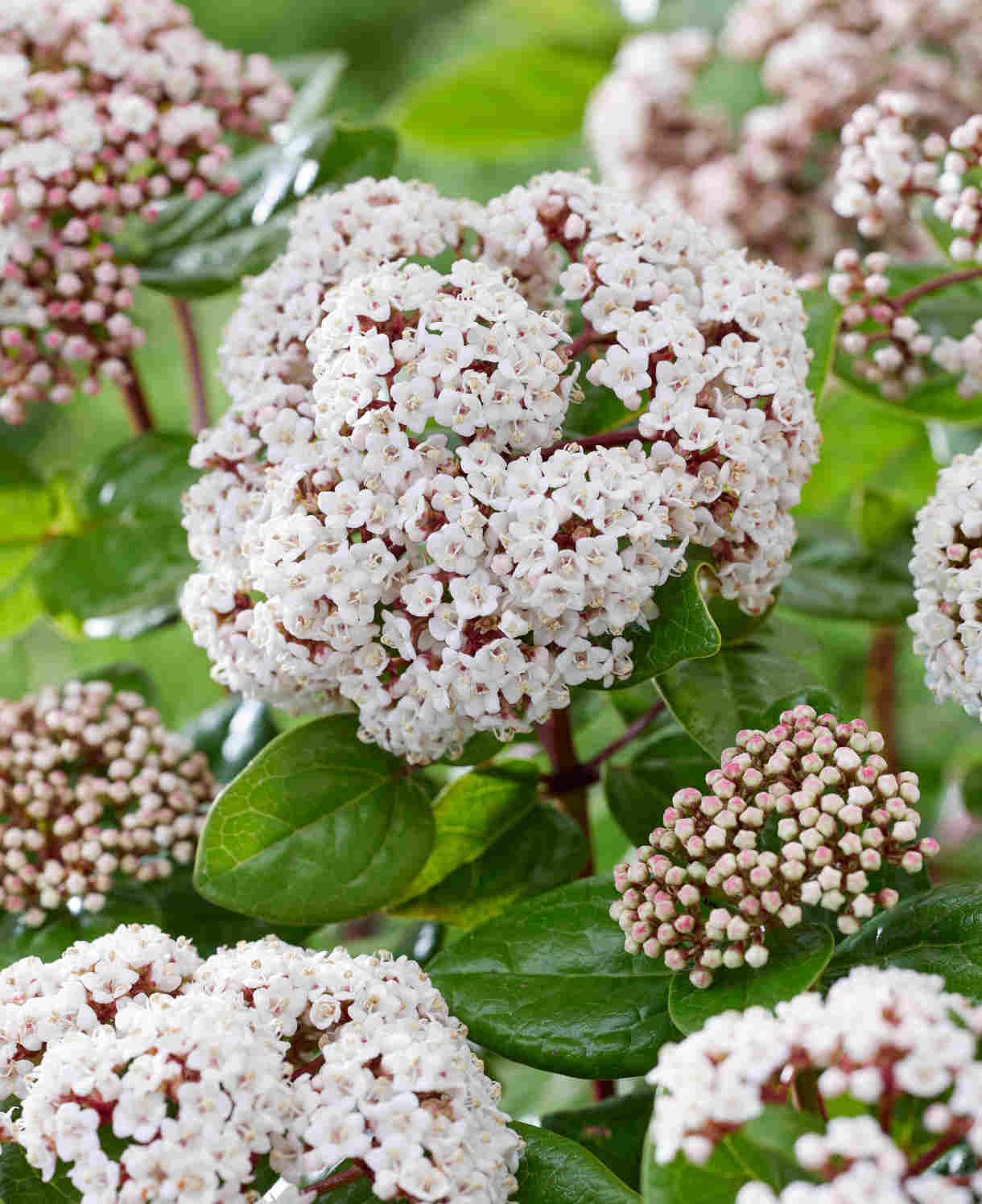

How to care for Edgeworthia
Pruning and Deadheading
Edgeworthia requires very little pruning and is best left to its own devices. Any dead, diseased, damaged, or badly placed branches can be pruned out after flowering.
Watering
Water until established, and then in very dry spells thereafter.
Contianer-grown edgeworthia will require regular watering throughout the growing season. Allow the top few centimetres of compost to dry out between soakings.
Keep on the dry side throughout winter dormancy until flower buds start to appear.
Cold Protection
Edgeworthia is hardy to between -5°C and -10°C, so should overwinter throughout most of the UK without the need for added protection. Having said this, its winter/ spring flowers can be damaged by frost, and so in areas prone to cold winters it is best grown in front of a warm, south-facing wall or in a container to be overwintered undercover (see ‘When and where to plant edgeworthia’ section above for more details). If these options are not possible, cover plants with fleece if they are in flower and a frost is expected.
Frost-damage to flowers does not affect the overall health of the shrub. It simply means you will miss out on the display that year.
Pests and Diseases
Edgeworthia tends to be trouble-free.
How to propagate Edgeworthia
Edgeworthia can be propagated by cuttings taken during summer.
- Find non-flowered shoots 5-10cm long and snip off the plant.
- Put them in a plastic bag straight away to prevent drying out.
- Fill a container with a compost mix which is at least 50% perlite (or if you prefer, as we do, 100% perlite).
- Trim the end of the cutting to just below a node (point at which leaves grow).
- Remove the lowest third of leaves.
- If the remaining leaves are large, cut them in half with a sharp knife (to reduce water lost through transpiration).
- Insert the cuttings into the compost and water lightly. Several cuttings can be put in the same container if there is enough space to do this without them touching.
- Place in a greenhouse or propagating unit if you have one or covered with a plastic bag on a windowsill if not (out of direct sunlight).
- Keep the cuttings misted and occasionally watered until they root. You will know this has happened when roots emerge out of the bottom of the container.
- Gently remove rooted cuttings and pot them into individual pots. Grow on in a cool yet frost-free environment such as an unheated conservatory, greenhouse, or cold frame, until they are large enough to be planted out.
Common Edgeworthia Questions:
Does edgeworthia need full sun?
Edgeworthia will grow happily in full sun or light dappled shade. Full shade is not recommended.
Can edgeworthia be pruned?
Edgeworthia is pruning group 1, which means it is best left unpruned apart from a light spring tidy. See the ‘Pruning and Deadheading’ section above for more details.
How big does edgeworthia get?
Most varieties of this shrub tend to grow to around 1.5m in height and spread. They take a decade or so to reach their eventual size.
Does edgeworthia like acid soil?
Edgeworthia is a very versatile shrub and can thrive in soils ranging from slightly acidic to slightly alkaline.
Can you grow edgeworthia in pots?
Yes. Edgeworthia is an excellent candidate for growing in a container, not least as this allows it to be moved to a more protected environment during cold winter weather. Be sure to use as large a container as possible to encourage healthy growth.



